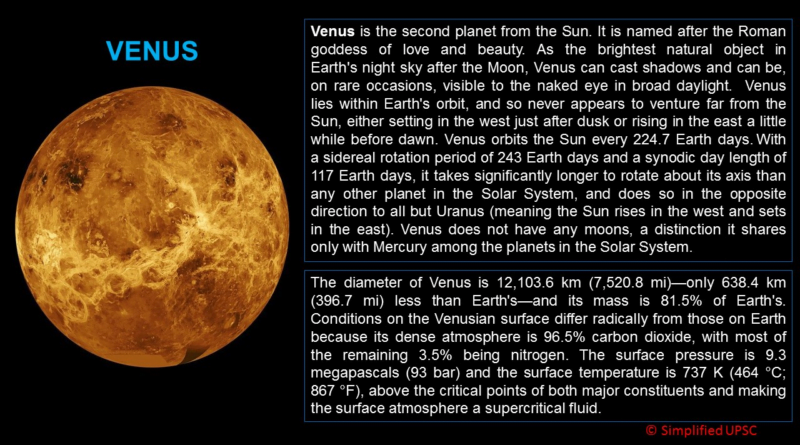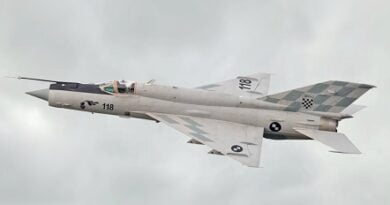VERITAS & DAVINCI+
Context:
NASA has announced two new missions to Venus. These two sister missions both aim to understand how Venus became an inferno-like world, capable of melting lead at the surface.
About:
- Venus is often called Earth’s twin because of similar mass, size, gravity, surface composition and complex atmospheric processes. However, we know much less about it compared to the other planetary neighbour, Mars. This is largely due to it being obscured by an extremely dense layer of atmosphere and clouds.
- NASA Wednesday announced two missions to Venus, Earth’s closest planetary neighbour, as part of its ‘Discovery Program’ that aims to explore and study the solar system.
- The two mission named The VERITAS & DAVINCI+
- The VERITAS (Venus Emissivity, Radio Science, InSAR, Topography, and Spectroscopy) mission will map the surface of the planet, study its geology, and hunt for volcanic activity
- The DAVINCI+ (Deep Atmosphere Venus Investigation of Noble gases, Chemistry, and Imaging) with its atmospheric probe, called Plus, will study the dense atmosphere of Venus to understand the trigger and evolution of the runaway greenhouse effect active on the planet.
- The missions are funded for $500 million each and are expected to launch somewhere around 2028-2030.
VERITAS:
The VERITAS mission will study the planet’s geology with radar, map its entire surface topography in 3D and will try to understand why it developed differently from Earth.
It will also study infrared emissions from the surface to map various kinds of rocks. The mission will also seek to understand if any volcanic or tectonic activity is present on the planet currently. It will also try to find out if any active volcanoes are releasing water vapour into the atmosphere, sustaining its greenhouse effect.
DAVINCI+
DAVINCI+ will measure the atmospheric composition of Venus and its formation and evolution. The mission will also try to determine if the planet held an ocean of liquid water in the past. The mission will return the first high-resolution images of unique surface features known as “tesserae” on Venus, which are akin to the continents on Earth, and suggest the existence of plate tectonics.
The mission’s accompanying Plus probe will drop into the atmosphere, making measurements of noble gas composition in the layers. Venusian atmosphere is richer in noble gases than Earth’s, indicating different means of evolution. The mission will also aim to understand why the atmospheric gases are in a runaway greenhouse effect and what set it in motion.
Other two missions:
Two smaller technology demonstrator missions will also fly with VERITAS and DAVINCI+. The “ultra-precise” Deep Space Atomic Clock-2 will be tested on VERITAS while the Compact Ultraviolet to Visible Imaging Spectrometer (CUVIS) will fly with DAVINCI+ to make high-resolution UV measurements.
The latter is expected to aid the understanding of how large amounts of incoming solar energy and UV gets absorbed by the atmosphere around Venus.
Previous missions to Venus:
- Magellan – a Nasa mission that ended in 1994.
- Venus Express– A European mission- focused on atmospheric science.
- Akatsuki– Japanese spacecraft- focused on atmospheric science.
Future missions:
The European Space Agency (Esa) is evaluating a Venus mission, called EnVision, alongside two astronomy proposals – Theseus and Spica. Other concepts are also being proposed to Nasa.



